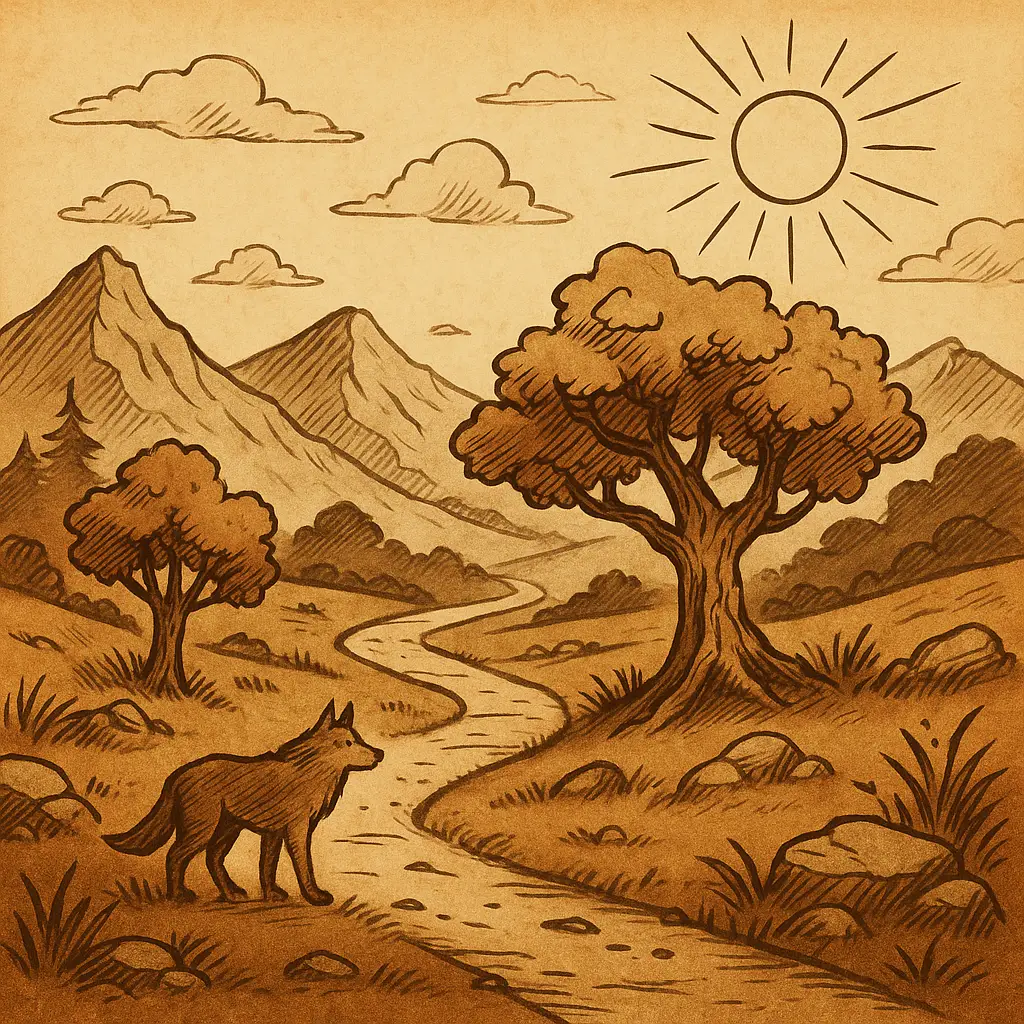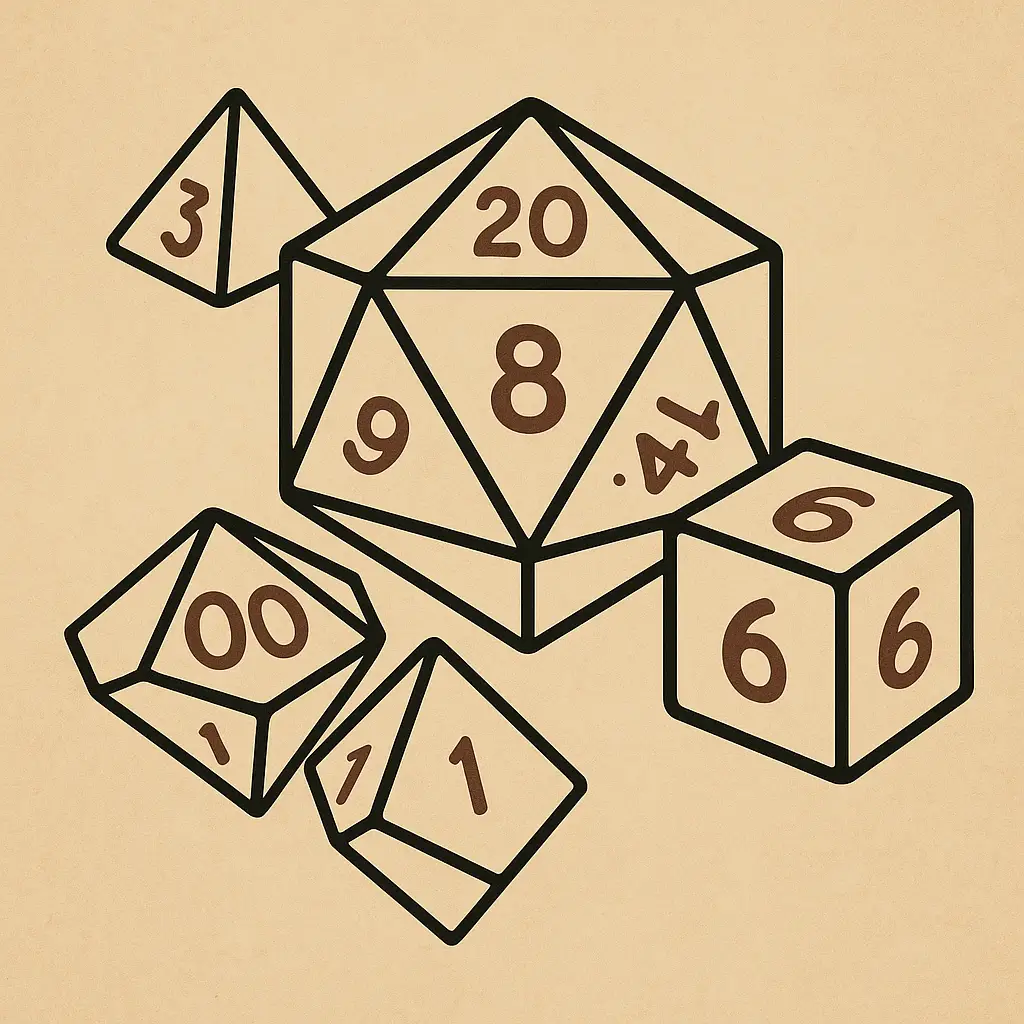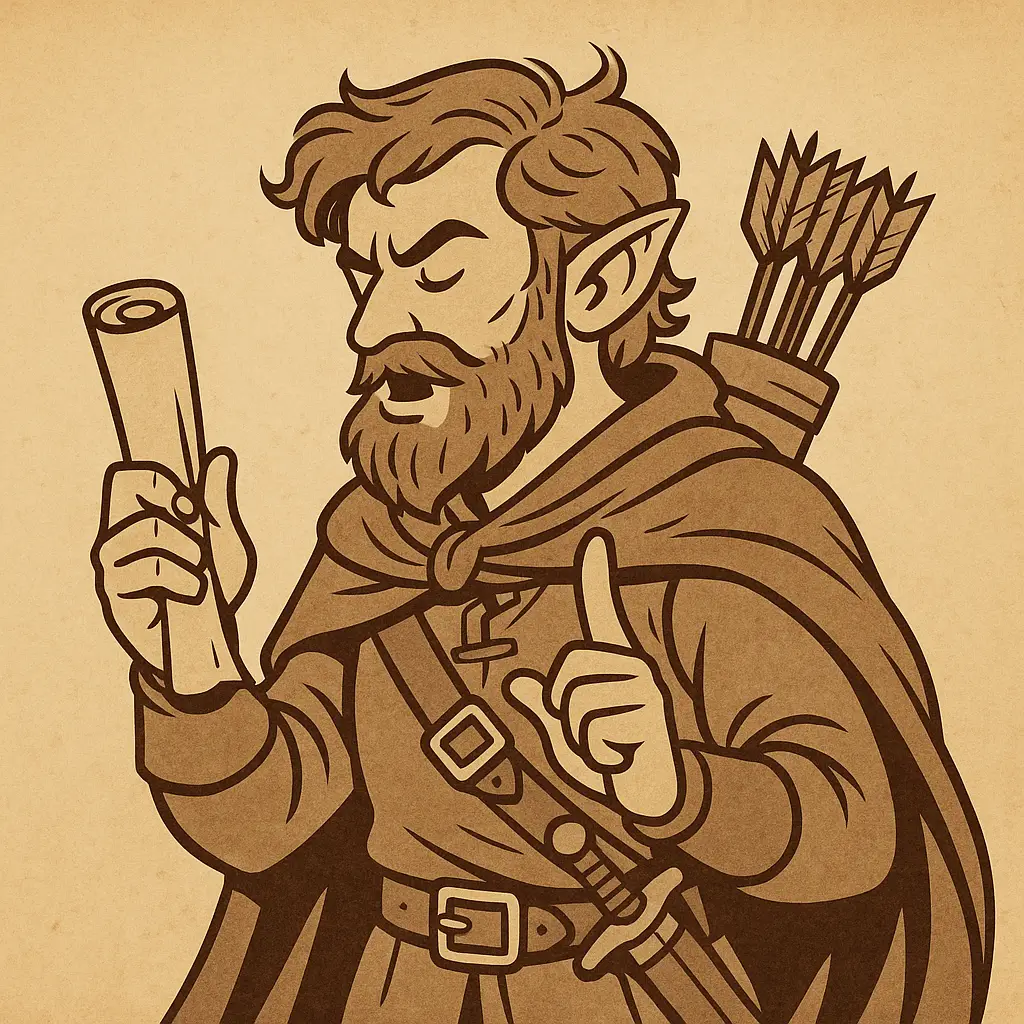Smart techniques for making wilderness and road travel interesting, meaningful, and full of surprises
We’ve all been there.
The party sets out on a multi-day journey. The GM rolls behind the screen. Then it happens:
“Roll initiative. It’s wolves.”
Again.
Now, no disrespect to wolves. They’re noble predators and a great level 2 hazard. But by the fifth or sixth time your players get ambushed on a forest trail, they start asking, “Can’t we just skip travel?”
That’s a missed opportunity.
Because travel—when done well—isn’t filler. It’s texture, tension, and character development. It’s where stories can shift subtly or catastrophically. It’s the journey before the dungeon that makes the dungeon matter.
Today on RPGInquisitor, we’re digging into how to build travel encounters that feel alive, dynamic, and memorable—even if a single die roll kicks them off.
🧠 Step 1: Reframe Travel as an Opportunity, Not a Tax
Before anything else, change how you think about travel.
Travel is not:
- A time sink before the “real” session
- A combat delay
- A series of skill checks to move the story forward
Travel is:
- A chance to introduce lore organically
- A stage for interpersonal roleplay
- A pressure cooker for pacing and stakes
- A scenic route through worldbuilding
You don’t need to skip over travel—you just need to make it do something.
🎲 Step 2: Categorize Your Encounters
Think beyond “combat” vs. “not combat.” Try framing encounters by narrative function:
🛠 Utility Encounters
These offer resources, information, or solutions.
- A dying courier with a letter that needs finishing
- An abandoned campsite with useful tools and ominous signs
- A cave that provides shelter… but something inside is watching
💥 Challenge Encounters
These test skills, trust, or time.
- A flooding river forces the party to improvise
- A disagreement between NPCs escalates into a moral choice
- A toll bridge operated by fairies demanding a memory instead of coin
👁 Mystery Encounters
These deepen intrigue or world lore.
- The same flock of birds seen three days in a row
- Carvings in a tree that match a player’s dream
- A traveler who swears the nearby town doesn’t exist
🎭 Emotional Encounters
These are low-stakes but high-impact character moments.
- An old song from a character’s homeland drifts through the woods
- A lost child reminds someone of their past
- A nighttime campfire story reveals something nobody knew
Let each travel day offer a different flavor. Players will begin to look forward to the journey.
🌦 Step 3: Use the Environment as an Encounter
Your terrain is a character. Treat it like one.
Forests:
- Trees that seem to change places overnight
- Birds going silent all at once
- A trail that loops back even though no one turned
Mountains:
- Narrow switchbacks with falling rocks
- Ancient symbols carved into the cliffs
- Cold that seeps into dreams
Deserts:
- Mirage monsters that only appear under moonlight
- Bone-dry oases that still attract animals
- Ghostly caravans walking familiar routes
A weather change is a roll. A shift in wind direction might reveal long-forgotten dangers. Even heat can be an enemy.
Build tension with:
- Sensory descriptions
- Terrain hazards
- Subtle magical effects
🕵️ Step 4: Sprinkle in Micro-Stories
Your world is full of people not involved in the main quest—but still living, dying, and getting weird.
Use micro-stories like:
- A caravan where something inside the largest wagon never exits
- Two rival hunters arguing over a legendary beast one just barely saw
- A widow looking for a battlefield no one else remembers
These don’t have to become side quests. They’re ambience.
But if players follow the thread? Boom—new story unlocked.
🔧 Step 5: Make Travel Reactive, Not Random
Random encounter tables are great—but don’t just roll and read.
Instead, curate your encounters based on:
- Party history (Have they angered anyone recently?)
- Location (What’s common here that isn’t elsewhere?)
- Season/time (Rain-soaked roads, migrating beasts, moon phases)
- Factions (Who might have interest in tracking or watching the party?)
- Player goals (Give them opportunities to progress subtly while traveling)
Don’t ask, “What happens on day three?”
Ask, “What’s the most interesting thing that could happen on day three?”
🧙 Step 6: Let Travel Shape the Characters
Use travel downtime for:
- Journaling scenes
- Character conversations
- Shared dreams or visions
- Reactions to the environment
You’d be amazed what players say to each other when they’re not in combat.
Encourage this with:
- Quiet moments at camp
- Shared watches at night
- One-on-one GM check-ins (“What’s going through your head as you walk alone?”)
These become the emotional anchor points of your campaign.
🧩 Step 7: Build In Travel Milestones
Make the journey feel like a journey.
Track:
- How many days have passed
- Landmarks passed (“Ah, the crumbling statue of the Sighing Knight—you’re halfway there”)
- Events that repeat or escalate (e.g., the wolves don’t attack yet—but they’re following)
Let travel create:
- Tension (“The storm is gaining on you”)
- Relief (“You reach the hills. The air is warmer here”)
- Routine (“You get to know the route. It feels almost… homey.”)
Travel shouldn’t just be forgotten the moment it ends. Let it mark the party.
🔀 Sample Travel Encounter Table (Forest Path, Level 5–7)
| d12 | Encounter |
|---|---|
| 1 | A disoriented noble in silk robes, claiming they were teleported here… from two decades ago. |
| 2 | A tree that bleeds silver sap, and animals gathered in reverent silence beneath it. |
| 3 | A scout from a nearby army offers to share news—if you can prove you’re not spies. |
| 4 | A merchant with no cart, only three heavily enchanted bags of holding. |
| 5 | A dying boar with strange tattoos carved into its hide. It speaks one word before expiring. |
| 6 | A bridge ahead has collapsed—but someone has left ropes… and a trail of candy. |
| 7 | The party hears drums in the distance. No one else does. They’re getting louder. |
| 8 | A hunter claims there’s no road here. Says they’ve lived in this forest their whole life. |
| 9 | Strange fog rolls in. All iron feels warm to the touch. |
| 10 | A wedding in the woods. Fey guests. You’re invited. Declining is very rude. |
| 11 | An old enemy’s wanted poster—updated and weathered—nailed to a tree. |
| 12 | The wolves again. But this time… they talk. And they have questions. |
🧠 Final Thoughts: Make the Road Matter
Your players are always in a hurry to get to the next big thing. That’s fine.
But when you slow down—when you make the journey strange, funny, tense, or tender—you give them something the dungeon never will:
Context. Culture. Contrast.
So don’t just throw wolves at them again.
Give them:
- Wounded gods in exile
- Singing stones by the riverside
- Arguments under starlight
And when they finally reach their destination?
They won’t say, “We got there.”
They’ll say, “You remember the road there? Gods, what a ride.”



